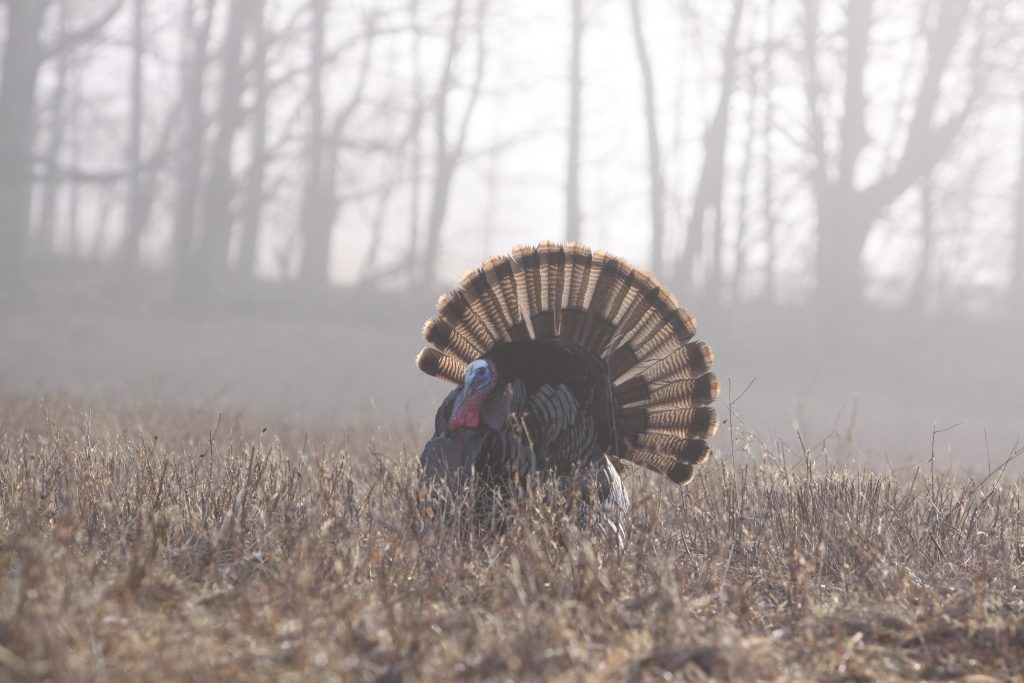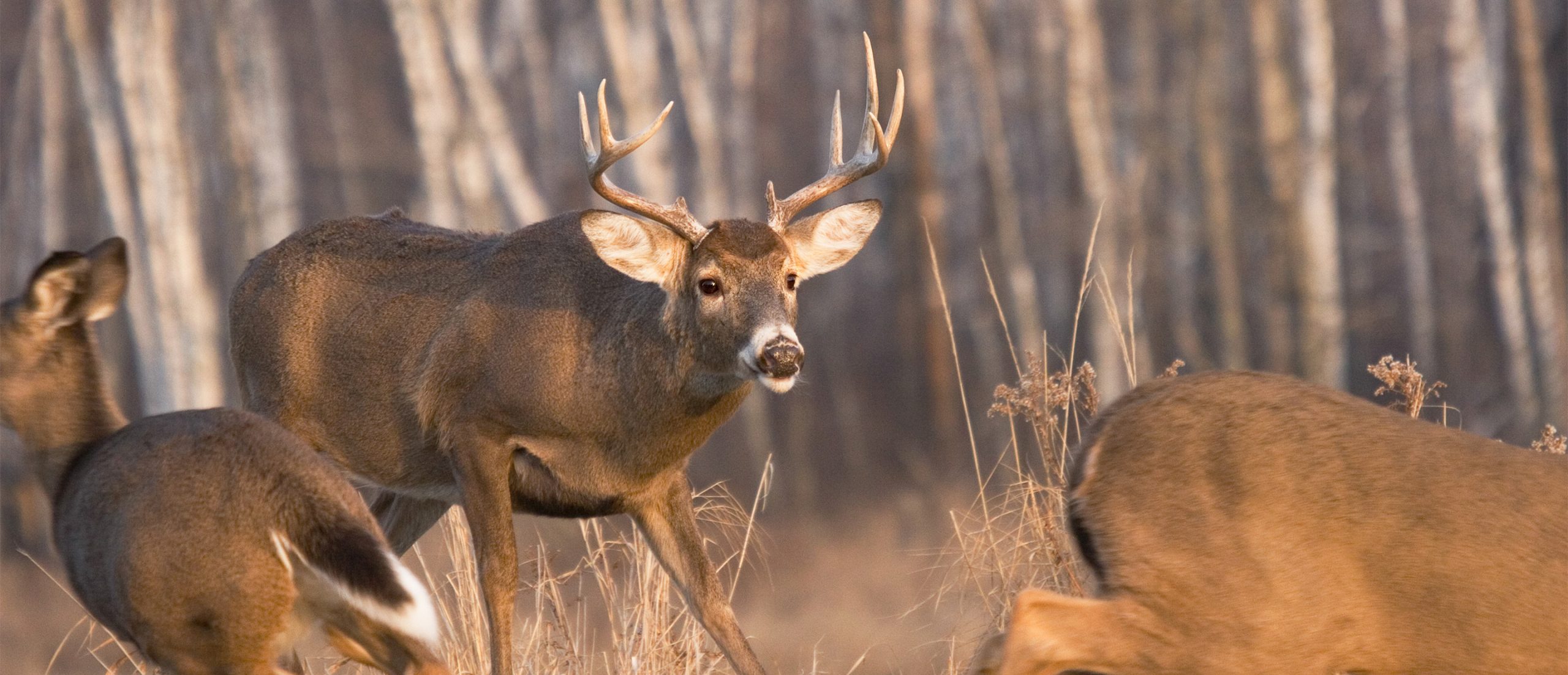The Whitetail Rut Vs. Spring Turkey Breeding Season
These periods represent the holy grail for deer and turkey hunters, but although they share similarities, they also have stark differences.
The annual reproductive rituals of deer and turkeys — the autumn rut and spring breeding season, respectively — receive more attention from hunters than any other periods. Critters are active, and hunters rightly believe their chances for success are higher.
On the surface, the rut and spring breeding period appear very similar, with deer and turkeys engaging in seasonal reproduction rituals in response to natural cues. However, they differ somewhat. Let’s compare how the rut puts bucks on the move in fall compared to gobblers in spring.
How They Work
Turkey mating activity typically follows a fairly predictable timeline, starting earlier in the South and stretching almost to summer in the North. The late Lovett E. Williams Jr., one of the country’s best-known turkey biologists and researchers, summarized the process in a chapter of the book The Turkey Hunters.
“As spring days become longer, winter hen flocks dissolve,” he wrote. “Gobbling [which often begins earlier in response to warmer weather] begins to pay off, as hens begin to associate with gobblers. Where turkeys are plentiful, large, loosely organized mating flocks form. Hens in mating flocks have no social relationship with each other, and their comings and goings change mating flock numbers almost daily. Gobblers have a strict pecking order, and only one in a group will mate. Other gobblers act as bodyguards and help with gobbling and strutting. Some jakes usually live on the fringes of mating flocks, but are unwelcome and have no role in mating.”
The mating season goes through several phases, many of which might overlap. Gobblers will breed as many hens as possible and can be henned up or searching for female company, depending on the nesting status of nearby hens.
“Soon after [mating], hens look for nesting cover and sometimes travel considerable distances,” Williams wrote. “Some gobblers usually move with them. As hens begin to nest, they stop associating with gobblers, and mixed-sex mating flocks diminish and gradually disappear. Small gobbler mating alliances combine into larger flocks, similar to groups before the spring break-up.”
The fall rut follows a somewhat similar progression. Noted deer hunter, photographer and researcher Charles J. Alsheimer broke the rut into three predictable stages. He said the first phase, seeking, is marked by a sudden increase in buck activity as bucks seek does. Chasing begins when a buck locates a doe that’s near estrus.
“As the buck approaches, the doe runs, but not in all-out flight,” he wrote in his 2017 rut prediction guide for Deer & Deer Hunting. “She soon slows or pauses to look back for the buck, which won’t seek other does and continues in pursuit. The buck occasionally catches up and tries to corner the doe. This can result in a long chase that continues until the doe lets the buck accompany her.”
Then tending behavior begins, Alsheimer wrote. “The buck will bed and move with the doe until she is bred. Tending usually lasts about 24 hours and ends abruptly. After the doe is bred, the buck again seeks other does.”
Alsheimer wrote that the rut is typically most intense and concentrated in the North, where the difference in day length from summer to winter is greatest. The rut lengthens the closer deer live to the Equator, which partly explains why it’s more varied in the South.
The Differences
Despite having many similar facets, the rut and spring breeding season are not identical. “When thinking about the rut versus spring breeding in turkeys, what always comes to mind is the fact that in both cases, males are trying to breed with as many females as possible,” said Michael Chamberlain, Ph.D., Terrell professor of wildlife ecology and management at the University of Georgia’s Warnell School of Forestry and Natural Resources. “But in deer, all males (even 1.5-year-olds) are involved in breeding, which contributes to the mayhem you often see in the rut, where bucks are running everywhere. Whereas in turkeys, only some males are breeding (jakes mostly not, some toms not), so the breeding season is more structured, and some males do most of the breeding.”
Also, Williams wrote that gobblers sometimes seemingly try to get an early start on the season, strutting and gobbling long before hens are ready for breeding.
“Gobbling is triggered by warm weather, (but) hens are stimulated to breed by increasing daylight,” he wrote. “The daylight period is a better predictor of spring than the weather. “In southern Florida, gobbling sometimes begins in late fall and doesn’t stop unless the weather cools. Sometimes, turkeys gobble all winter. Hens seem to be affected only slightly by the weather and pay no attention to early gobbling. When hen flocks break up when spring finally comes, they go to gobbling, breed and then go to nest.”

Conclusion
Differences and similarities aside, the fall rut and spring breeding season secure the future of deer and turkey populations and provide unforgettable action for hunters. Folks who pursue both species remain thankful that the events occur at different times of year, so they can enjoy each season without having to choose.
The Hunter’s Glossary
Key terms and truths every deer and turkey hunter should know:
Rut: The sudden increase in buck activity as bucks seek does in the fall. Chasing begins when a buck locates a doe that’s preparing to breed.
Rut Timing: Typically most intense and concentrated in the North, where the difference in day length from summer to winter is greatest. The rut lengthens the closer deer live to the Equator, which partly explains why it’s more varied in the South.
Estrus: A cycle female mammals enter when they become fertile and ready to breed; also known as “in heat.”
Henned up: Used to describe a gobbler that is surrounded by hens during the spring breeding season.
Nesting cover: After hens are bred in the spring, they will look for this cover to lay their eggs; it can vary from high grass in fields, to fallen branches or trees, or anywhere that provides concealment from predators.
Gobbling and breeding: Hens are stimulated to breed by increasing daylight; male wild turkeys gobble as the temperatures begin to warm.
